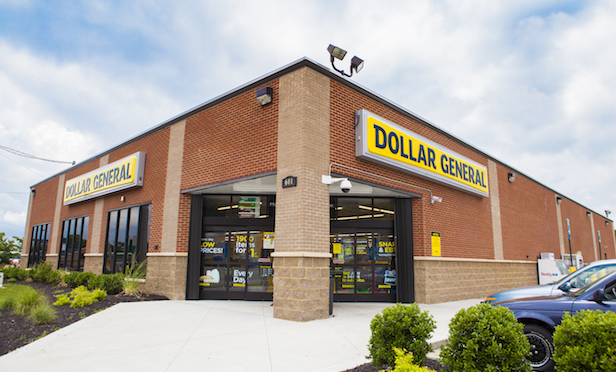 Dollar-store retailers, including Dollar General, are among the most popular single-tenant development concepts in the net lease sector.
Dollar-store retailers, including Dollar General, are among the most popular single-tenant development concepts in the net lease sector.
CALABASAS, CA—The big question mark hanging over the net lease retail sector is the fate of the 1031 exchange, which could be swept away amid changes to the tax code, says Marcus & Millichap. At the moment, the uncertainty’s effect on transaction volume or pricing has been “muted,” although that could change.
“Driven by investors’ desire to shift their portfolios towards less management intensive assets, 1031-exchange volumes make up a considerable portion of the net lease marketplace,” according to Marcus & Millichap’s fall report on net lease retail. Year to date, exchange-related buyers have accounted for more than 40% of transaction volumes. “As a result, the status of this tax provision moving forward will remain a major driver of deal flow and investment demand.”
Given the extensive use of the 1031 provision in net-leased deals, “the potential elimination of this statute could have a substantial impact on deal flow as investors adjust to the new tax code,” the report states. Although the speculation over the exchange’s future has been “a constant source of discussion among investors,” thus far it’s had little effect on asset pricing, “with infill assets with top-tier tenants pricing from the low-4% band.”
In the interim, Marcus & Millichap says, the potential for tax code changes, together with increasing competition among net-leased concepts, is “generating a longer, more intensive due diligence period as investors exercise more caution.” Longer term, while “legislative changes from Capitol Hill remain in flux,” additional clarity on the direction of regulatory and tax code changes could result in “greater urgency among investors to transact before or after the changes are implemented.”
For the moment, though, the sector’s fundamentals aren’t posing any anxiety or urgency. Marcus & Millichap notes that average asking rents for net-leased retail have risen 4.3% over the past year, reaching $20.21 per square foot nationwide at the end of the second quarter. Average prices per square foot have now exceeded the previous high, established in Q1 of 2008.
Underpinning these metrics is a “constructive” consumer sales environment as far as net-leased development is concerned, with core retail sales rising 3.7% in August on a year-over-year basis. Growth was particularly strong in the furniture and building materials sectors, which increased 5.4% and 7.5%, respectively, Y-O-Y.
Marcus & Millichap reports that net-leased development remains the key driver of overall retail construction, accounting for more than 46 million square feet of the 60.4 million square feet of new retail space delivered over the past year. Within that total, single-tenant construction has averaged 45 million square feet over the past three years.
“Throughout the current business cycle, builders have been constructing projects favoring single-tenant concepts, particularly in the quick-service restaurant, pharmacy and dollar-store segments,” according to the Marcus & Millichap report. “Broadly, net-leased deliveries have accounted for more than 80% of retail development since 2009, up from below 70% before the recession.
“Despite the upswing of net-leased deliveries, demand for spaces remains well ahead of supply growth, with net absorption exceeding development by an average of more than 16 million square feet annually since 2010,” the report states. “As a result, vacancy has fallen 250 basis points to 4.7% nationwide.”

















 Copyright © 2024 ALM Global, LLC. All Rights Reserved.
Copyright © 2024 ALM Global, LLC. All Rights Reserved.